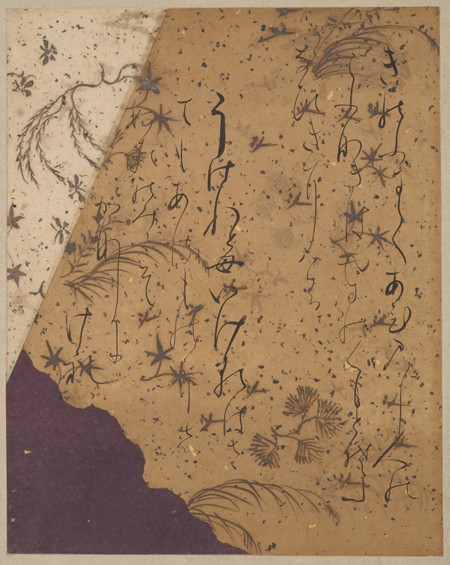It is a historical situation ripe for elegy and nostalgia, and indeed the history of Japan, its literature, and its art reflect this. For art historians, the name GoShirakawa immediately calls to mind the Hall of the Lotus King (Rengeōin 蓮華王院), a temple founded by the emperor that housed his vast and storied collection of paintings, among which numbered several of what are now the most celebrated examples of Japanese painting. Rather than take up these canonical paintings, I have turned my attention instead to several fragmentary contemporaneous manuscripts. Despite the centrality of these artifacts in the visual culture of the period, their relative marginality in the history of Japanese painting is due, I argue, to persistent methodological biases that have sometimes erected illusory divisions between sculpture and painting, the secular and the sacred, and—most problematically—the processes of inscription and depiction.
The first of these manuscripts is the provocatively titled Eyeless Sutra (Menashikyō 目無し経), a once-five-volume set of handscrolls with monochromatic line drawings and Buddhist sutra text layered in a complex palimpsest. Epigraphical and textual analysis of the colophons paired with close looking at the stratigraphy of the marks calls into question the dating and the romantic creation story of this National Treasure. Unfettered by the mythos of its creation, one can look anew at perhaps more salient features of the work, such as the peculiar relationship of the inscribed sutra text and the airily faint underdrawings. Upon close inspection, it becomes clear that these two strata inflected one another, effecting an estrangement through
My shoptalk provided a forum for
The final central artifact is Anthology of the Thirty-Six Poets (Sanjūrokunin kashū 三十六人歌集), a monumental thirty-nine-volume series of manuscripts in
Members' Research Report Archive
Emperor GoShirakawa and the Image of Classical Japan
Kristopher W. Kersey, [University of California, Berkeley]
Andrew W. Mellon Fellow, 2012–2014
Few emperors in Japanese history rival the renown, if not the infamy, of emperor GoShirakawa 後白河天皇 (1127–1192 CE). The tenor of his patronage and depth of his engagement with painting, poetry, and especially song are remarkable—all the more so considering that he ruled, as retired sovereign, during a period marred by frequent violence, sly intrigues, and incessant machinations. Given this context, some see in his patronage and acquisitiveness the workings of an adept soft-power strategist, while others lampoon him as a feckless dilettante whose profligacy cost the imperial family its political might. For with his death in 1192, the “classical” Heian era (784–1192) came to a close, and real political power shifted to what was to be the first of several martial governments that would rule Japan in the imperial family’s stead for nearly eight centuries thereafter. While at the Center this year, I have worked to complete a dissertation that addresses the complex interplay of inscription and depiction found in the objects created during this politically tumultuous and yet artistically innovative era.

Calligraphy attributed to Fujiwara no Sadanobu 藤原定信 (1088–1156),